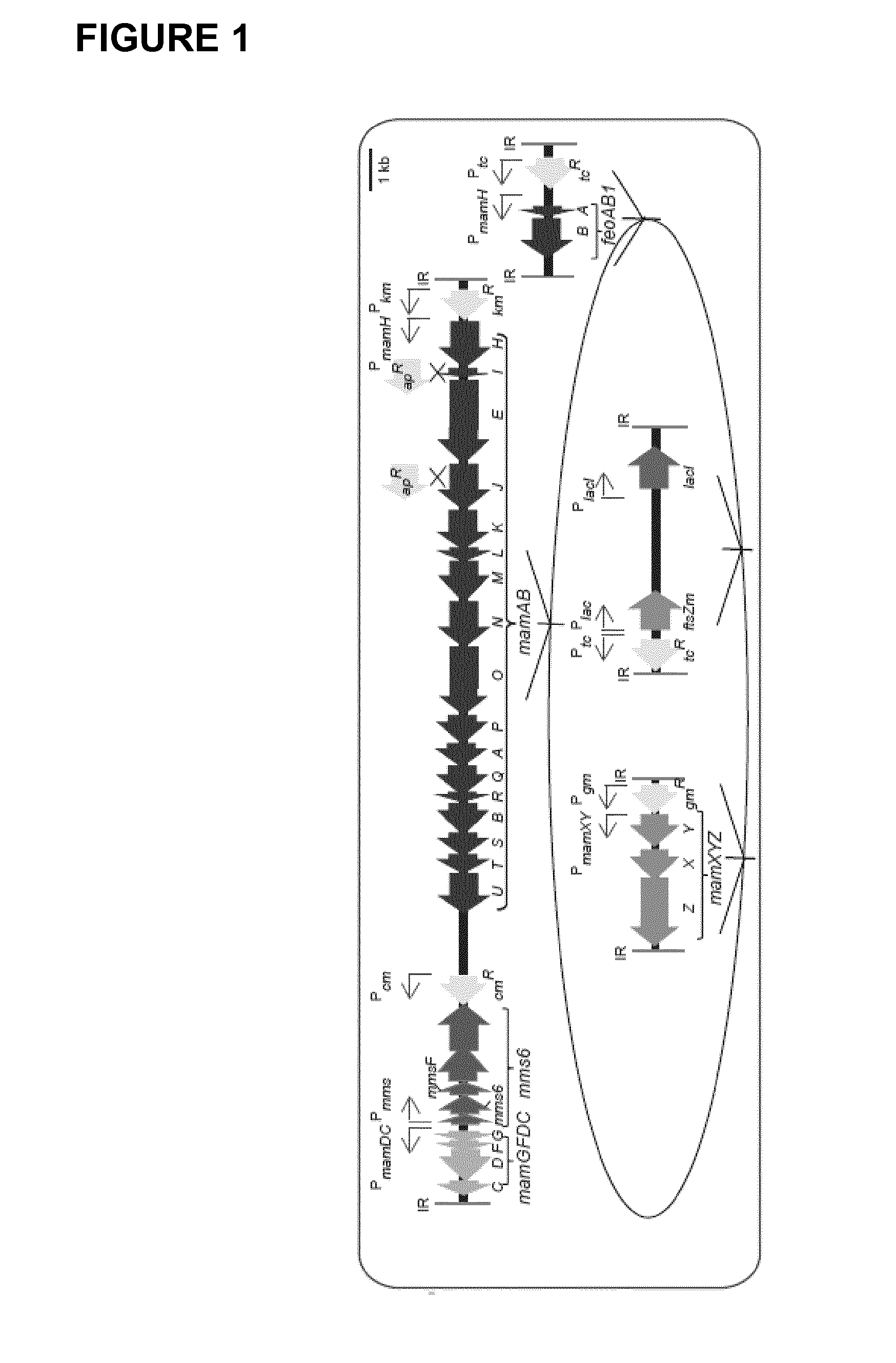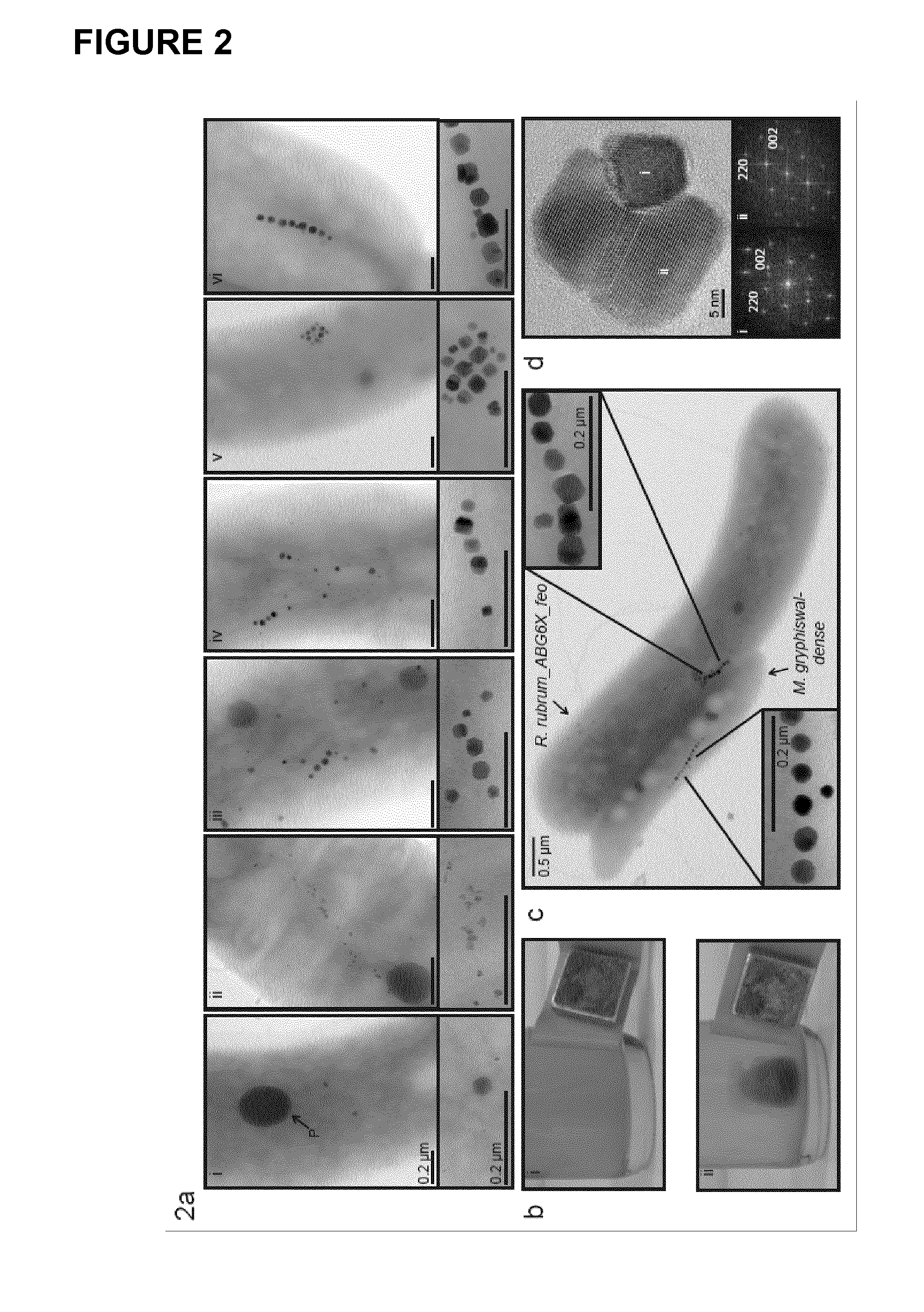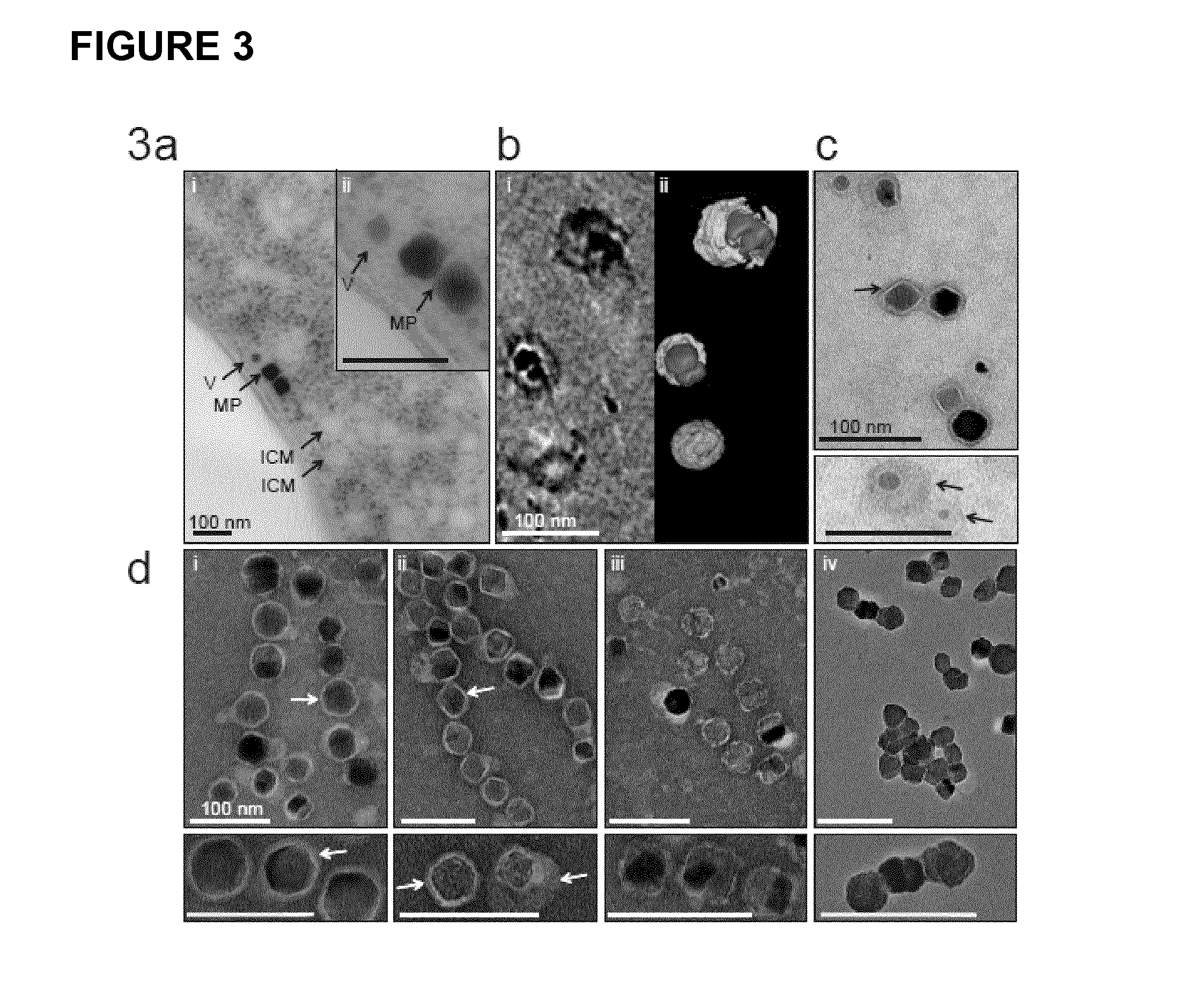Production of magnetic nanoparticles in recombinant host cells
a technology of magnetic nanoparticles and host cells, which is applied in the direction of bacteria peptides, chemistry apparatus and processes, peptide sources, etc., can solve the problems of insufficient application of particular dimensioned nanocrystals via these synthesis routes, particle size is too small for clinically relevant applications, and the production of particularly dimensioned nanocrystals is significantly hampered
- Summary
- Abstract
- Description
- Claims
- Application Information
AI Technical Summary
Benefits of technology
Problems solved by technology
Method used
Image
Examples
examples
1. Materials and Methods
[0108]1.1 Bacterial Strains
[0109]Bacterial strains are shown in Table 4. E. coli strains were cultivated as previously described (Sambrook, J. & Russell, D. (2001) Molecular cloning: a laboratory manual. Vol. 3, Cold Spring Harbor Laboratory Press). 1 mM DL-α,ε-diaminopimelic was added for growth of BW29427 and WM3064.
[0110]Liquid cultures and single colonies of Magnetospirillum gryphiswaldense were cultivated in FSM medium or on agar plates (1.5% agar) incubated at 30° C. under microaerobic (1% O2) conditions (Heyen, U. and Schüler, D. (2003) Appl. Microbiol. Biotechnol. 61, 536-544; Kolinko, I. et al. (2011) J. Bacteriol. 193, 5328-5334)
[0111]Cultures of Rhodospirillum rubrum strains were cultivated chemoheterotrophically (ATCC medium 112) with free gas exchange in the dark, microaerobically in M2SF medium (Ghosh, R. et al. (1994) Appl. Environ. Microbiol. 60, 1698-1700), or photoheterotrophically in Sistrom A medium (Sistrom, W. R. (1962) J. Gen. Microbiol...
PUM
| Property | Measurement | Unit |
|---|---|---|
| diameter | aaaaa | aaaaa |
| weight | aaaaa | aaaaa |
| size | aaaaa | aaaaa |
Abstract
Description
Claims
Application Information
 Login to View More
Login to View More - R&D
- Intellectual Property
- Life Sciences
- Materials
- Tech Scout
- Unparalleled Data Quality
- Higher Quality Content
- 60% Fewer Hallucinations
Browse by: Latest US Patents, China's latest patents, Technical Efficacy Thesaurus, Application Domain, Technology Topic, Popular Technical Reports.
© 2025 PatSnap. All rights reserved.Legal|Privacy policy|Modern Slavery Act Transparency Statement|Sitemap|About US| Contact US: help@patsnap.com



